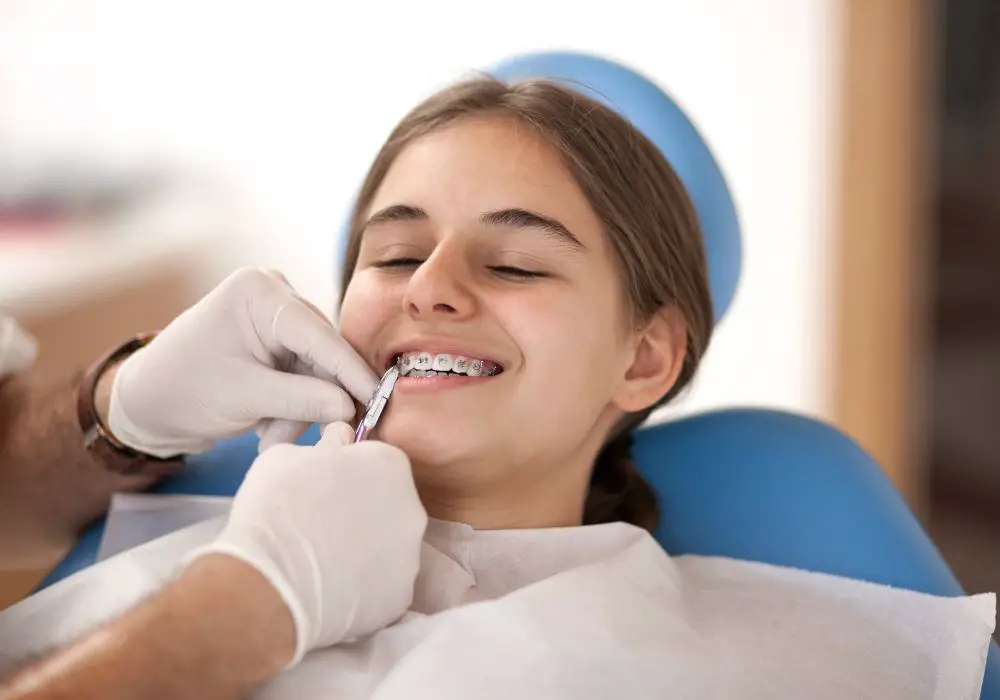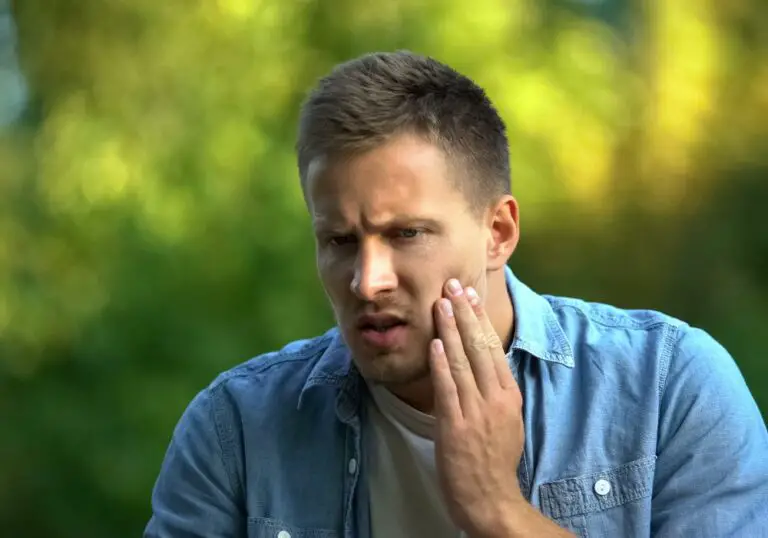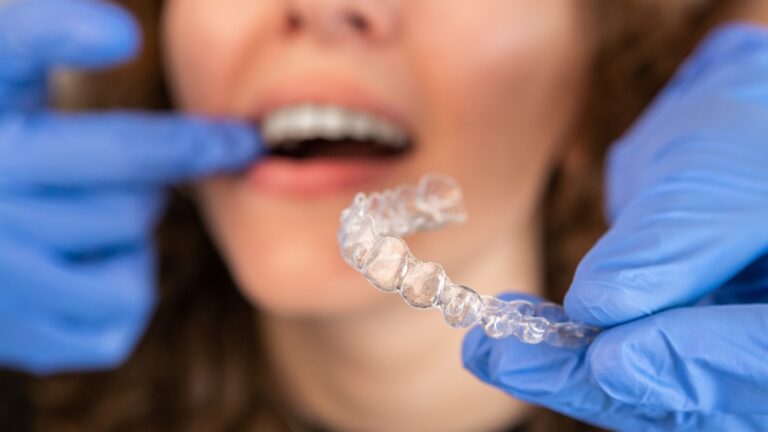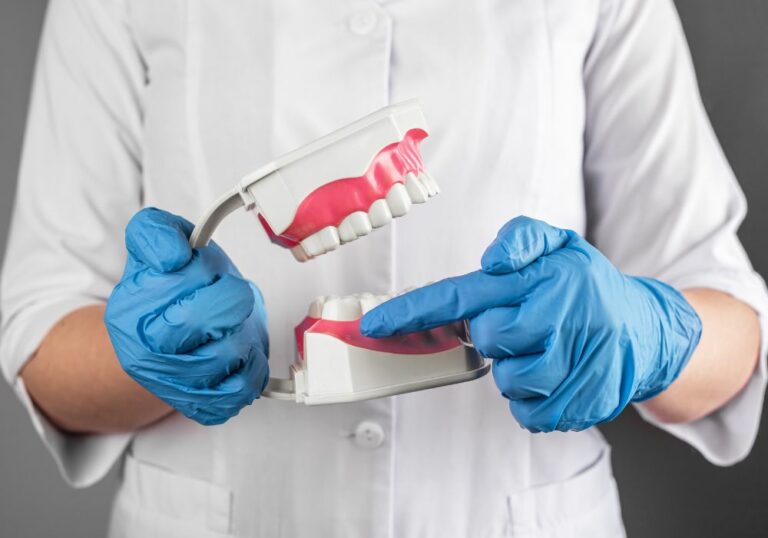A Common Occurrence After Orthodontic Treatment
After enduring months or years of braces, it’s an exciting milestone when you finally get to have your braces removed. However, once the braces come off, you may notice some new discoloration or marks on your teeth that weren’t there before.
It’s very common to have some residual marks and stains left on your teeth after your braces are removed. Don’t panic – these marks are rarely permanent. With the right care, they will diminish over time as your teeth recover from the braces. Understanding what causes these marks can help you effectively treat them for a brighter, whiter smile.
What Types of Marks Can Braces Leave?
There are several types of marks that may be apparent on your teeth after you complete orthodontic treatment with braces:
Glue Stains
Braces rely on dental adhesive glue to bond the brackets to each tooth surface. This glue is quite strong to endure chewing forces. When the braces are taken off, the glue is also removed, often by scraping and peeling it away.
This glue removal process can leave behind stains or discoloration where the glue adhered to your teeth. The stains may appear as yellowish, brownish or greyish marks in the spots where brackets were. The stained areas have a dulled, frosty appearance.
Glue stains are caused by residual adhesive remaining even after the brackets are taken off. Tiny fragments of the glue get left behind in the microscopic grooves of the enamel. This gives the staining effect.
White Spots
White spot lesions are areas of demineralization or mineral loss on the enamel surface. Underneath the braces, plaque and bacteria can build up more easily, causing decay. This decay leads to white spot formation as minerals leech out of the enamel.
You may notice these white marks scattered in certain areas along the teeth where the brace brackets were. The white lesions may be small dots or patches on the enamel. They have a chalky, opaque appearance that contrasts against your natural enamel shade.
Plaque Stains
With braces, it can be challenging to clean fully around the brackets, wires and other fixed appliances in your mouth. This allows more plaque to accumulate on your teeth.
Plaque that is left on the teeth mineralizes into tartar or calculus. This calculus is stony-hard and also traps stains from foods, drinks and smoking. Calculus buildup can leave greyish or brownish stains on the enamel along the gumline or between teeth after braces.
Discoloration and Dulling
The braces wires and brackets make it easier for stains to become ingrained on your teeth over time. Things like coffee, tea, red wine, tobacco, certain medications, etc. can cause staining when they get trapped around orthodontic appliances.
This can lead to generalized yellowing or brownish discoloration of the tooth enamel after your braces are removed. Your teeth may also appear more dull or lack luster due to thick plaque buildup.
What Causes These Marks to Form?

There are a few reasons why braces promote the development of these undesirable marks and stains on your teeth:
Biofilm Retention
Braces provide many nooks and crannies for plaque bacteria to hide out. Brackets, wires and elastic ties all limit access for cleaning and allow biofilm to build up. Thick plaque deposits can lead to both demineralization and staining issues.
Food/Drink Trapping
The fixed braces make it easy for bits of food and sugary/staining drinks to get trapped around your teeth. Without quick removal, this debris leads to more cavity-causing bacteria and tooth discoloration.
Difficult Cleaning
It’s a challenge to clean effectively around braces with a toothbrush and floss. The wires and brackets block complete access. Without diligent cleaning efforts, plaque and stains can accumulate in harder-to-reach areas.
Enamel Damage
The demineralization process softens enamel and makes it more porous and prone to staining. Enamel may also be inadvertently scraped by brace removal tools, making it more likely to pick up discoloration.
Acidic Foods/Drinks
Beverages like sodas, sports drinks, citrus juices and vinegars can erode enamel over time. This erosion makes teeth more susceptible to yellowing stains penetrating the enamel after braces.
Areas Most Affected by Marks
Certain parts of your teeth are more likely to exhibit marks and discoloration after you complete orthodontic treatment:
Gumline
Plaque and calculus most readily build up where the teeth meet the gums. This can cause greyish or brownish stains along the gumline after braces. Mineral buildup between teeth is also common.
Bracket Locations
Demineralization from braces often occurs in spots precisely where the brackets were adhered to teeth. You may see distinct white lesions or glue staining in bracket outline shapes.
Between Teeth
The tight contacts between teeth make these areas harder to clean. Food debris, plaque and stains can gather in these spaces, especially near the chewing surfaces.
Cervical Areas
The neck region of the tooth crown near the gumline is vulnerable to erosion andDecay. Braces appliances accelerate issues in this area. Stains frequently develop in the cervical third of the tooth.
How Long After Braces Are Marks Visible?

For most individuals, the majority of marks caused by braces will diminish significantly within 6 months after the braces come off. However, this depends on the severity of the stains or discoloration:
First 2 Weeks
When the braces first come off, these marks may look most noticeable and concerning. Residual glue stains, calculus and dullness will be at their peak.
1-2 Months
During the first months after braces, you should notice glue stains and mild white spots gradually starting to fade. Teeth will slowly regain their natural luster.
3-6 Months
From 3 to 6 months post-braces, stains continue improving. Any plaque buildup and glue residue still hanging on will steadily wear away to a less noticeable level.
6+ Months
For more stubborn cases of enamel discoloration, demineralization or intrinsic staining, your teeth make take upwards of 6 months or longer to show their full improvement. Patience is key!
In general, mild glue and plaque stains will clear within a few months. Deeper white spots or dullness may take about 6 months to disappear. Proper dental care speeds healing.
Caring for Teeth After Braces
While your teeth are recovering from the effects of braces, it’s important to care for them gently and thoroughly:
- Brush 3x daily for 2 minutes with fluoride toothpaste
- Clean between teeth daily with floss or interdental brushes
- Rinse daily with an antiseptic mouthwash to reduce bacteria
- Avoid stain-promoting foods/drinks like coffee, tea, wine and tobacco
- Drink plenty of water and reduce consumption of acidic drinks
- Get regular dental cleanings every 6 months to keep plaque at bay
Follow your orthodontist’s recommendations for wearing retainers as directed to keep teeth looking their best.
Professional Treatment Options
If your teeth are still exhibiting noticeable discoloration, stains or defects longer than 6 months after braces, see your dentist for professional treatment options:
Dental Cleaning
A deep professional dental cleaning is the most effective way to remove built-up plaque, calculus and stains from braces. Your dentist will use scalers and polishers to thoroughly clean teeth above and below the gumline.
Teeth Whitening
In-office or take-home teeth whitening kits can brighten teeth a few shades by removing surface stains. Whitening is generally safe for enamel, but consult your dentist first.
Enamel Microabrasion
This minimally invasive procedure uses an acidic gel to gently abrade off the outermost stained layer of enamel. It smooths and rids enamel of defects.
Dental Bonding
To cover stubborn spots, dental bonding applies a resin coating shaped and colored to match your natural teeth. The resin bonds seamlessly with surrounding enamel.
Porcelain Veneers
Veneers are thin porcelain facings custom made for your teeth. Putting veneers on top of problem teeth can effectively conceal any lasting marks from braces.
Will Marks Completely Disappear?

For mild to moderate cases of tooth marks, the discoloration and effects should completely resolve within 6 months of brace removal. Proper oral care will keep your smile looking clean long-term.
However, severe intrinsic staining or enamel defects may cause permanent color changes requiring periodic treatment. Continued smoking and acidic food/drink habits can also cause stains to reappear. But maintaining excellent hygiene provides the best odds of your teeth staying whiter permanently after braces.
Questions and Answers About Marks After Braces
Here are answers to some common questions about the marks orthodontic treatment can leave behind:
What are the most common types of marks left by braces?
The most common residual marks from braces are glue stains, white spot lesions from demineralization, plaque staining near the gums, and generalized dullness or discoloration of the enamel.
How long does it take for teeth to look normal again after braces?
It generally takes 1 to 2 months for mild glue and plaque stains to diminish after braces. More stubborn discoloration or white spots may take up to 6 months or longer to return to normal appearance.
Can marks reappear even after getting them professionally cleaned?
Yes, some mild glue residue and new plaque buildup might redevelop after professional cleaning. However it will be far less noticeable than before cleaning, as long as you maintain good oral hygiene.
Is teeth whitening unsafe for enamel after braces?
When performed correctly, teeth whitening is safe for enamel, even after orthodontic treatment with braces. However, consult your dentist about the best options.
Will marks from braces disappear permanently?
For mild to moderate cases, the marks should permanently resolve within 6 months after braces removal. However, severe intrinsic stains may require periodic retreatment. Maintaining great dental habits will keep your smile whiter long-term.
Conclusion
Marks and stains on your teeth after braces are a common temporary occurrence. Understanding what causes them and taking proper care of your teeth will help them resolve. Talk to your orthodontist and dentist about any stubborn discoloration lasting more than 6 months post-braces. With patience and good home care, your bright, mark-free smile will return!






